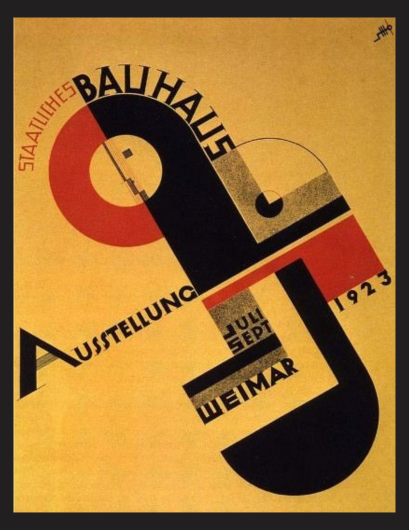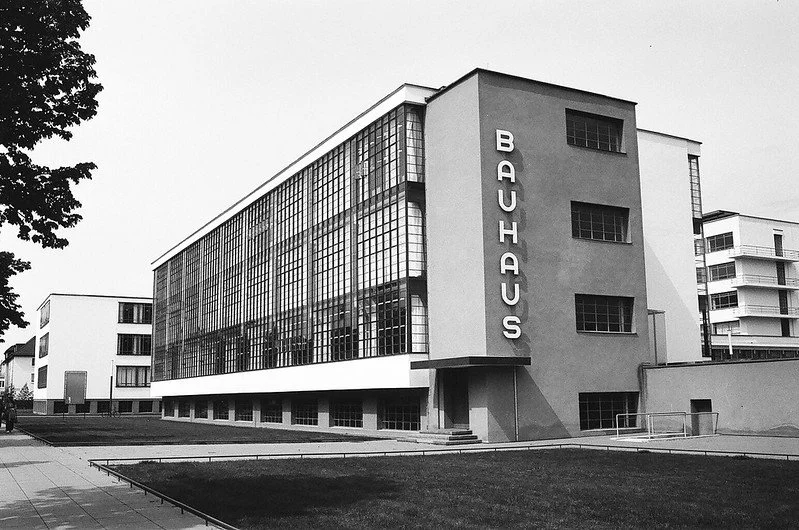Learning Unbound + Bauhaus: A Branding Love Affair
One of the many exciting things for me about launching Learning Unbound was all the intentionality and individuality I got to bring to every element of my practice: From the name, to the services I offered, to my office space, and my branding… every choice felt important, because I was bringing something new into being, and I didn’t want any of it to be incidental (a philosophy I also bring to my learning experience design work! Details matter! Everything is connected!)
Developing my brand identity (a whole thing I knew absolutely nothing about, but really enjoyed learning), I found myself drawn to these bold, simplistic geometric shapes with strong lines and vibrant colors. Searching for more examples of the style, I discovered I was in the world of Bauhaus - a term I had heard, but something else I knew nothing about.
Committed as I was to the intentionality of every element of this creation, once I knew I had a thing for the Bauhaus aesthetic, I needed to do some research to make sure it was a movement that aligned with my values and the mission of Learning Unbound. Well, I was pretty blown away by what I learned:
“The Bauhaus was founded in 1919 in the city of Weimar by German architect Walter Gropius (1883–1969). Its core objective was a radical concept: to reimagine the material world to reflect the unity of all the arts” (Winton, 2016). Hello?!? Breaking down silos between disciplines?!? Go on… The vision of the Bauhaus movement was for art to serve a social role; for fine art to be integrated with functional design and craftsmanship, and to be interdisciplinary; to elevate the everyday object while making art more accessible to everyday people. The Bauhaus school in Germany drew students “from a diverse range of social and educational backgrounds” (Winton, 2016) and its approach to teaching “replaced the traditional pupil-teacher relationship with the idea of a community of artists working together” (Tate, n.d.). Did you say learner-centered, hands-on education for students who might not otherwise have access to these opportunities? You’re speakin’ my language, Bauhaus!
The word itself, “bauhaus” translates to “construction house,” which is appropriate given that there was literal construction taking place inside. But Tate suggests that the name “may have been intended to evoke the idea of a guild or fraternity working to build a new society” (Tate, n.d.), and I’d like to agree - I mean, the movement was about so much more than utilitarian construction! And also, this idea was the cherry on top of alignment with my values. As a believer in learner-centered education, my education philosophy is grounded in what’s called social constructivism. To put it simply, social constructivism is the idea that learners are not empty vessels to be passively filled with facts. They are complex beings (all learners are human!) who bring their own experiences, worldview, and prior knowledge to the learning process, and the educator’s role is to facilitate an environment where learners can work together to explore new concepts and construct new understandings - even if those understandings don’t look identical from one learner to the next. In other words, a learner-centered classroom might be considered… wait for it… a construction house. A Bauhaus.
So, it was settled. The visual embodiment of Learning Unbound would be Bauhaus because Bauhaus is learning, unbound.
References:
Gropius, W. (1919). Program of the Staatliche Bauhaus in Weimar. Design Museum of Chicago. https://bauhausmanifesto.com/
Richman-Abdou, K., & Cole, M. (Feb 6, 2023). Bauhaus: How the avant-garde movement transformed modern art. My Modern Met. https://mymodernmet.com/what-is-bauhaus-art-movement/
Tate (n.d.). Bauhaus. https://www.tate.org.uk/art/art-terms/b/bauhaus
Winton, A. G. (2016). The Bauhaus, 1919–1933. The Metropolitan Museum of Art. https://www.metmuseum.org/essays/the-bauhaus-1919-1933



